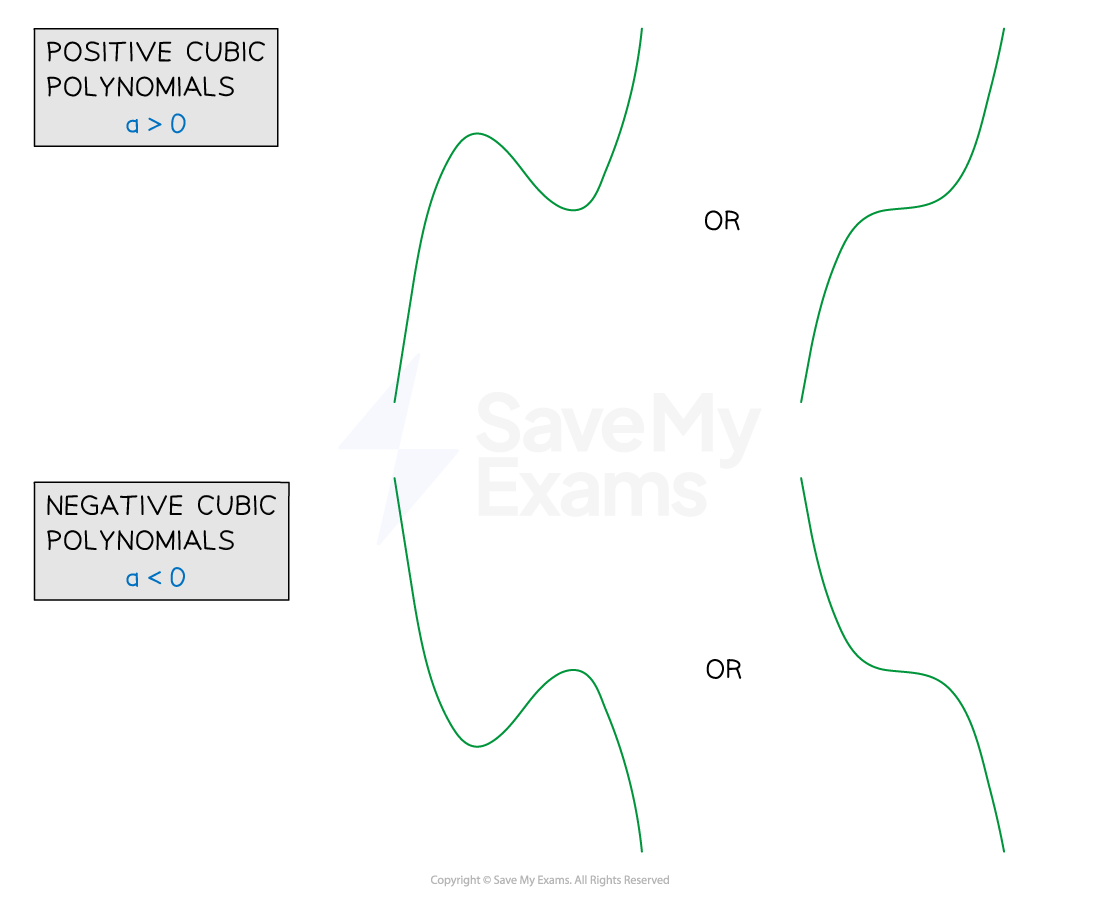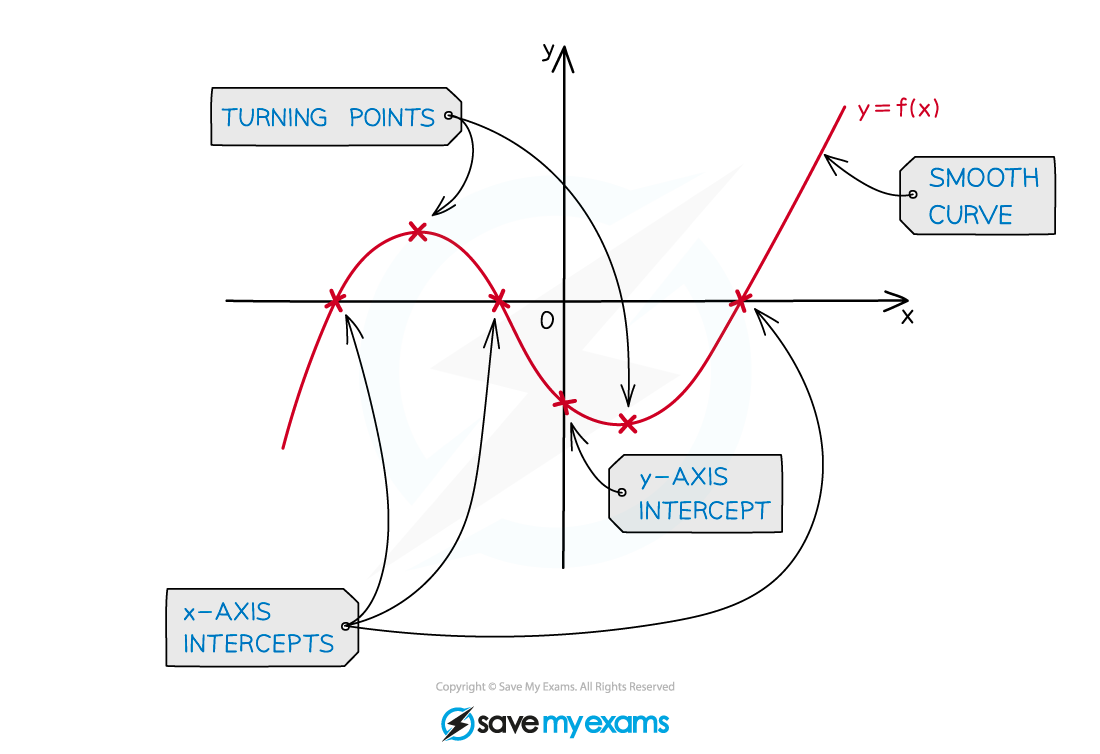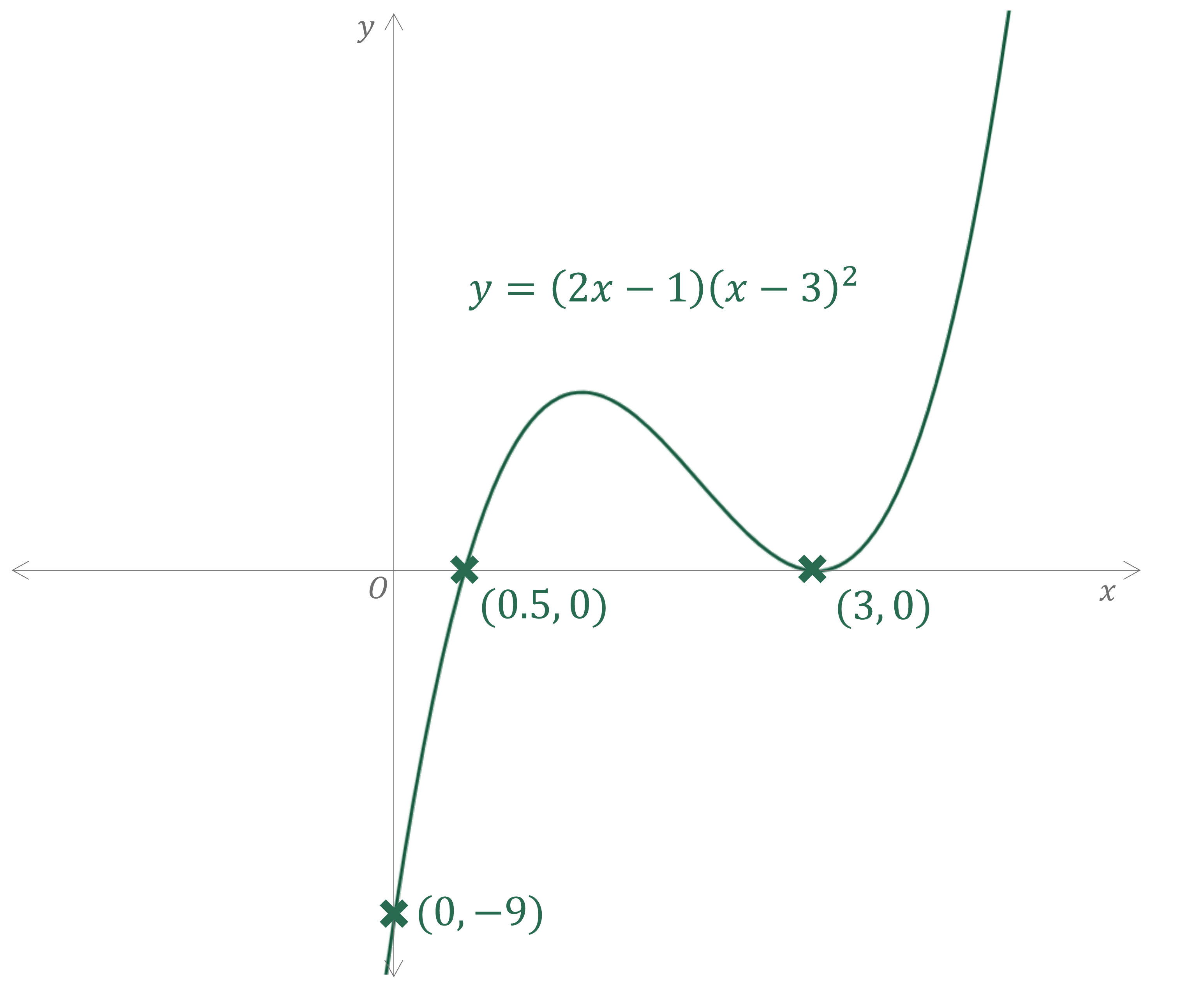Cubic Graphs (Cambridge (CIE) IGCSE International Maths): Revision Note
Exam code: 0607
Cubic Graphs
What is a cubic?
A cubic is a function of the form
and
are constants
It is a polynomial of degree (order) 3
So
and/or
could be zero
To sketch the graph of a cubic polynomial needs to be in factorised form
E.g.
is the factorised form of
You do not need to factorise a cubic unless it is a more simple one
E.g.
You should be able to expand three brackets to find the expanded form of a cubic
What does the graph of a cubic look like?
In general the graph of a cubic will take one of the four forms
All are smooth curves

The exact form of a particular cubic will depend on:
The number (and value) of roots (
-axis intercepts)
The
-axis intercept
The sign of the coefficient of the
term (
)
If
the graph is a positive cubic ('starts' in the bottom left, 'ends' in the top right)
If
the graph is a negative cubic ('starts' in the top left, 'ends' in the bottom right)
The turning points

Cubics can have two turning points
a maximum point and a minimum point
However, note that the graphs of
and
:
Do not have a maximum or minimum (turning points)
Only cross the
-axis once, at
How do I sketch the graph of a cubic?
STEP 1
Find the-axis intercept by setting
STEP 2
Find the-axis intercepts (roots) by setting
In factorised form, this can be done by inspection
A cubic of the form
has roots at
and
E.g.
has roots at 2, 3, and -5
Any repeated roots will mean the graph touches the
-axis
The graph does not cross the
-axis
E.g.
touches the
-axis at
, and intersects the
-axis at
STEP 3
Consider the shape of the graphIs it a positive cubic or a negative cubic?
Where does the graph 'start' and 'end'?
STEP 4
Consider where any turning points should goSTEP 5
Sketch the graph with a smooth curve
Label points where the graph intercepts theand
axes
Worked Example
Sketch the graph of .
STEP 1
Find the -axis intercept by substituting in
STEP 2
Find the -axis intercepts by solving
Either bracket can be equal to zero
(repeated solution, as there are two brackets
STEP 3
Consider the shape, and the 'start' and 'end' points:
so it is a positive cubic
is a repeated root so the graph will touch the
-axis at this point
STEP 4
Consider the turning points
One turning point (minimum) will need to be where the curve touches the -axis
The other (maximum) will need to be between the two roots and
STEP 5
Sketch a smooth curve with labelled intercepts


You've read 0 of your 5 free revision notes this week
Unlock more, it's free!
Did this page help you?